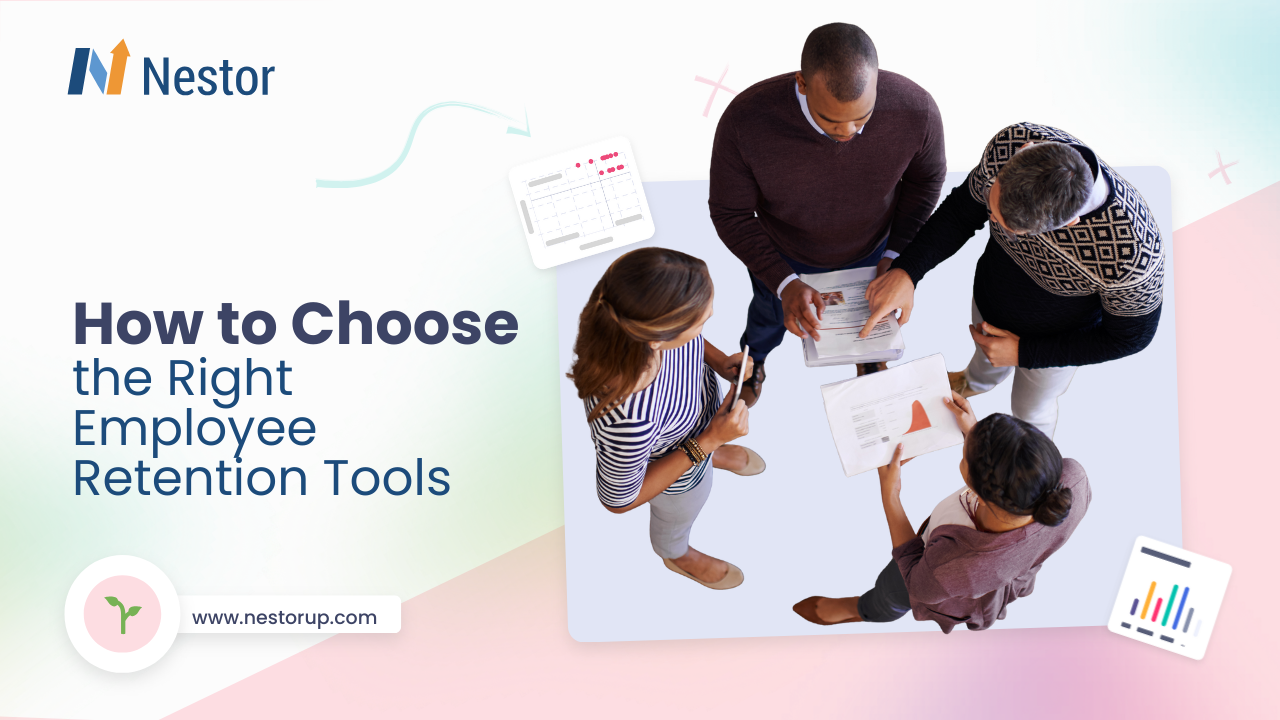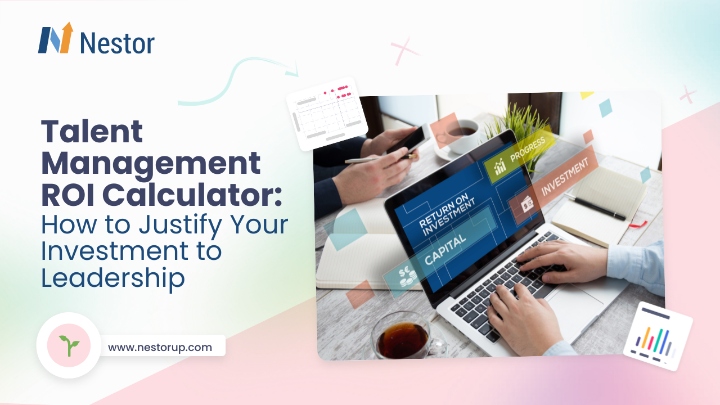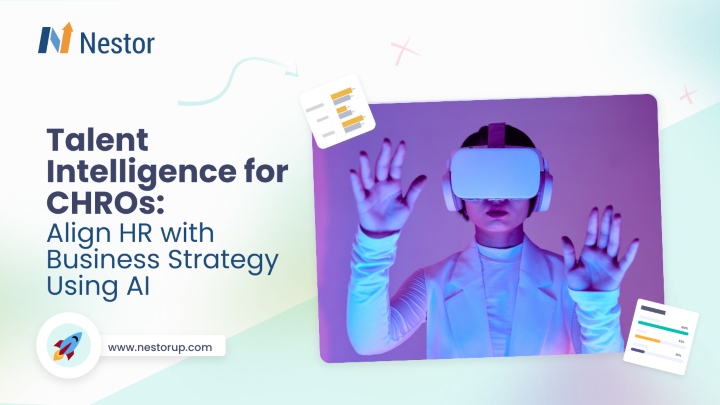How to Choose the Right Employee Retention Tools
12 min read

In a world where 93% of organizations are concerned about keeping their workforce, according to a LinkedIn report, employee retention tools and strategies have become more important than ever.
These retention programs and tools are designed to help create a positive and engaging work environment that fosters employee satisfaction, loyalty, and motivation.
They also aim to highlight what your workforce really wants and needs to perform better and have an overall feeling of fulfillment regarding their day-to-day activities and long-term career.
But what is the true impact of employee retention tools? And what are the factors you should keep in mind when choosing one? We’ll answer these questions and many others in this article.
Why are employee retention strategies and tools important?
Whether a company succeeds or fails to retain people will have a significant impact on its productivity, business goals, and profit margins. And achieving this is even more important in the current tight talent market.
With that in mind, here’s why you should step up your game when it comes to employee retention:
- Cost savings: High employee turnover can be very costly, as it results in a loss of productivity, knowledge, and expertise, which aren’t easily replaced.
- Competitiveness: Skilled and experienced employees are valuable assets for organizations, and retaining them will help maintain a competitive advantage in the marketplace.
- Productivity & performance: Employees who are happy and engaged tend to be more productive and perform better, which will have a positive impact on the company’s overall performance.
- Reputation: A high employee turnover rate can have a negative impact on an organization’s reputation, both internally and externally. Retention strategies and tools can either make or break your image as a desirable employer.
The cost of replacing an individual employee can range from one-half to two times the employee's annual salary.
— Gallup
What drives employee retention in the modern world?
Any successful employee retention strategy should be aligned with the needs and expectations of the workforce. And, after several years of uncertainty, stress, and changes, these needs and expectations have shifted. Significantly.
Make no mistake, according to the same LinkedIn report, compensation and benefits still remain among the top 5 factors people consider when looking for a job. Closely followed by the pandemic-fuelled desire to work when and where they want (flexibility).
But the next 3 priorities are all about exploration, growth, and learning:
Continuous learning opportunities
Continuous learning opportunities at work are essential for both employee and organizational success. They help build a skilled and engaged workforce, improve organizational agility, and drive business results.
From the employees’ point of view, continuous learning and development ensure that they remain relevant, adaptable, and skilled in their jobs. It also provides a sense of purpose and fulfillment, as they are able to grow in their careers and achieve higher goals.
Having access to training and development opportunities also contributes to making employees feel valued and engaged. In time, this will, inevitably, lead to higher job satisfaction and retention.
Internal mobility
Now more than ever, internal mobility has become an essential part of talent management and retention. And both employees and organizations can reap the benefits.
Internal mobility offers employees more flexible opportunities for career growth and advancement. It also opens the door to lateral moves or transitioning to a new career through reskilling.
Through these opportunities, employees achieve multiple things at once:
- expand their skillsets
- broaden their experiences and knowledge
- build relationships across the organization
It is thus easy to see why internal mobility can play an essential role in reducing turnover and increasing employee retention.
Career development
And last but not least is career development, which actually encompasses learning opportunities and internal mobility, as well as coaching, mentoring, and networking, among others.
In the new modern way of doing work, career development should become more people-centric and skills-based. Employees need the chance to explore different positions based on their skills, potential, and personal interests.
In this new approach, vertical career growth no longer needs to be the default path. That’s because:
- lateral moves might be more attractive
- additional job responsibilities might not align with work-life balance goals
- developing coaching and leadership abilities isn’t of interest to everybody
To play a successful role in the retention of employees, career development paths need to be clearly defined, transparent, and flexible at the same time. Every worker should have the right opportunity and steps to grow in a way that best suits them and their organization.
Must-have features of employee retention tools
While there are many efficient and creative ways to retain employees, we’ll focus on tools specifically designed to address this challenge for Human Resources.
And what does any modern retention tool need to be effective? Features based on a multi-dimensional approach to improving employee retention. Let’s look at a few examples:
Engagement surveys
Engagement — also called satisfaction or pulse — surveys are an essential tool of any employee retention strategy. These surveys help HR and leaders:
- discover what employees truly want
- understand employee satisfaction, motivation drivers, and commitment within the organization
By measuring employee perceptions and attitudes towards various aspects of their work, engagement surveys provide insights into areas where the organization is performing well and where improvements are needed. This information can be used to develop targeted interventions that address specific issues and improve levels of productivity and involvement.
Satisfaction surveys also demonstrate to employees that their opinions and feedback are valued and heard, which will improve morale and trust within the company.
However, not all engagement surveys are made equal. And a one-size-fits-all approach is unlikely to bring your HR department results. This is why, at Nestor, we’ve designed highly customizable and all-purpose survey templates, which help leaders and people managers make better and informed decisions based on accurate people data.
360 feedback
This is a powerful tool for guiding employees as it provides comprehensive feedback from multiple sources, including peers, managers, subordinates, and other stakeholders.
The reason why 360 feedback can be highly valuable for employees is that it provides a holistic view of their performance and enables them to:
- identify their strengths and how they bring value to the organization
- discover areas for development and align them with personal goals
Additionally, 360 feedback promotes a culture of openness, transparency, recognition, and continuous improvement. And this type of culture can go a long way in improving employee retention and job satisfaction.
And Nestor’s 360 feedback loops have been designed with that approach in mind: multiple perspectives that build the foundation for continuous growth. This way, we have a double impact: encourage growth and authentic leadership on one side while providing insightful real-time metrics and tailored suggestions on the other.
Performance reviews
In the modern world of work, performance reviews should no longer focus exclusively on assessing an employee’s progress toward achieving their goals but also:
- support employees’ development
- set mutually agreed upon (employee-manager) development goals
- help employees understand how their performance and growth impact organizational objectives
But why is this type of performance review a key employee retention tool? Because, enabling employee development can lead to improved engagement, productivity, and overall job satisfaction.
And here, at Nestor, we share the belief in a modern redesign of performance management and reviews. Our platform already facilitates continuous performance assessment, which is rooted in helping employees better perform and grow at the same time.
The No.1 way organizations are working to improve retention is by providing learning opportunities.
— LinkedIn Workplace Learning Report
Personalized learning and development (L&D) opportunities
Personalized L&D opportunities should be at the forefront of employee retention in the modern world. Developing this type of opportunity usually involves:
- Skills assessment: Determine the abilities and knowledge already available within the company and their level of proficiency.
- Upskilling and Reskilling: Use the insights collected to understand the existing skills gaps and create upskilling programs for people who seek to make vertical moves inside the company. At the same time, implement reskilling initiatives for employees who decide to transition to new roles.
Personalized L&D opportunities that are in line with employees’ own interests, desires, and career goals, will increase their chances of staying with the company for a longer time.
And this is yet another feature available through Nestor’s People Intelligence Platform. With our easy-to-relate-to capability maps and proficiency levels, you will be able to easily align people’s unique skills with the best-fit development goals. This way, you’ll achieve a win-win situation that drives business impact and supports employees on their growth path.
Internal mobility
We’ve already highlighted that internal mobility has become one of the top 5 factors that make people join, stay, or leave a company.
And organizations of all sizes would benefit from implementing this approach, which allows them to track and match opportunities with career aspirations across different teams and departments.
Even for employees who don’t have a clear career path in mind, internal mobility can still help. Through programs like job shadowing or participation in projects from other departments, they can figure out a direction they’d like to pursue.
To facilitate internal mobility in organizations, our platform empowers people to draw their own career paths. How? Through agile employee growth plans, 1:1 coaching sessions, and leadership development tools, among others. All in one place. All easily accessible. All designed to help you build the workforce of tomorrow.
Recognition
Timely and ongoing recognition is one of the pillars of increasing employee engagement and improving retention rates. It also directly contributes to building a culture of appreciation and trust, which boosts employee morale and job satisfaction.
To be effective, recognition should celebrate all wins, small and big, and look at people’s overall performance across time, not only specific moments. This approach can also contribute to performance reviews, making them easier and allowing managers to avoid common challenges, like recency bias, for example.
With Nestor, you’ll discover that praise and recognition are an integral part of building high-performance teams. We encourage open celebrations, public rewards, and highlighting people’s success and role in making your business thrive.
Usability & integration of employee retention tools
To be successful, employee retention tools or software also need to have:
- Usability or ease of use
- Easy integration with other platforms and applications
Usability of employee retention tools
Ease of use determines, in many ways, the adoption rate of any HR tech tool. While features and benefits might be great, they also need to feel intuitive, responsive and designed with employees, managers, and HR specialists in mind.
Speed is also a factor here, especially in a world where people will give up on a website if it takes more than a few short seconds to load. The sleek design of a retention tool won’t mean much if it’s too slow or complex.
The UI (User Interface) also needs to have a clever layout, which allows fast navigation between different features and uses relevant visual cues, like plus signs, arrows, and so on.
Some tools even offer gamification features, which can make the process of using them more fun and interactive.
Integration with other platforms
Employee retention tools should seamlessly integrate with existing HR software and systems, benefits platforms, or payroll software.
The easier it is for managers and employees to access and use this type of tool, the more likely they are to engage with it and derive value from it — which is a win-win for everybody.
In addition to integrations with HR software, employee retention tools should also be able to integrate with communication platforms such as Slack or Microsoft Teams. This way, HR leaders and managers can access real-time insights and data without having to juggle multiple apps.
At the two-year mark, an employee who has made an internal move has a greater chance of staying with their company.
— LinkedIn Workplace Learning Report
How do you measure the effectiveness of employee retention software?
Choosing the right tools to improve employee retention can involve trial and error. That’s why you need a clear set of metrics and expectations to establish whether a certain software meets your organizational needs. Here are some of the key metrics and KPIs that can be used in this situation:
- Adoption metrics: Monitoring how often the tool or software is used and by how many employees and managers. This can be tracked through analytics and user data.
- Employee retention & turnover rates: Analyzing changes in these rates before and after implementing the tool or software can indicate its impact. Here you should always remember that correlation does not necessarily imply causation.
- Tenure length: Determining if the overall length of time each employee has been with the organization increases (or decreases) after using one or more employee retention tools.
- Absenteeism: Observing a decrease in the number of days that employees are absent from work, either due to sickness or other reasons, after adopting a retention tool.
- Employee feedback: Listening to opinions from employees who have used the tool can provide insights into its effectiveness. This can be done through surveys, focus groups, anonymous feedback boxes, etc.
- Cost-benefit analysis: Calculating the expenses of implementing and maintaining the retention software versus the benefits it provides, such as savings from reduced turnover or increased productivity.
How Nestor can help improve employee retention rates
At Nestor, we put people at the heart of everything we do! Our unique human-centric and skills-based approach enables us to bring together a host of cutting-edge features that work seamlessly to support organizations in engaging, developing, and retaining their talented workforce.
In today’s fast-paced and ever-changing business landscape, employee retention is a top priority. That’s why we’ve included the best employee retention tools in our platform, designed to help companies keep top talent and achieve their goals.
Our clients have already experienced the benefits of these powerful tools and are now able to offer their employees the right opportunities at the right time, leading to people and organizational success.
Whether you’re a small start-up or a large enterprise, our platform has everything you need to build a motivated, skilled, and engaged workforce. Start transforming your workplace today!










